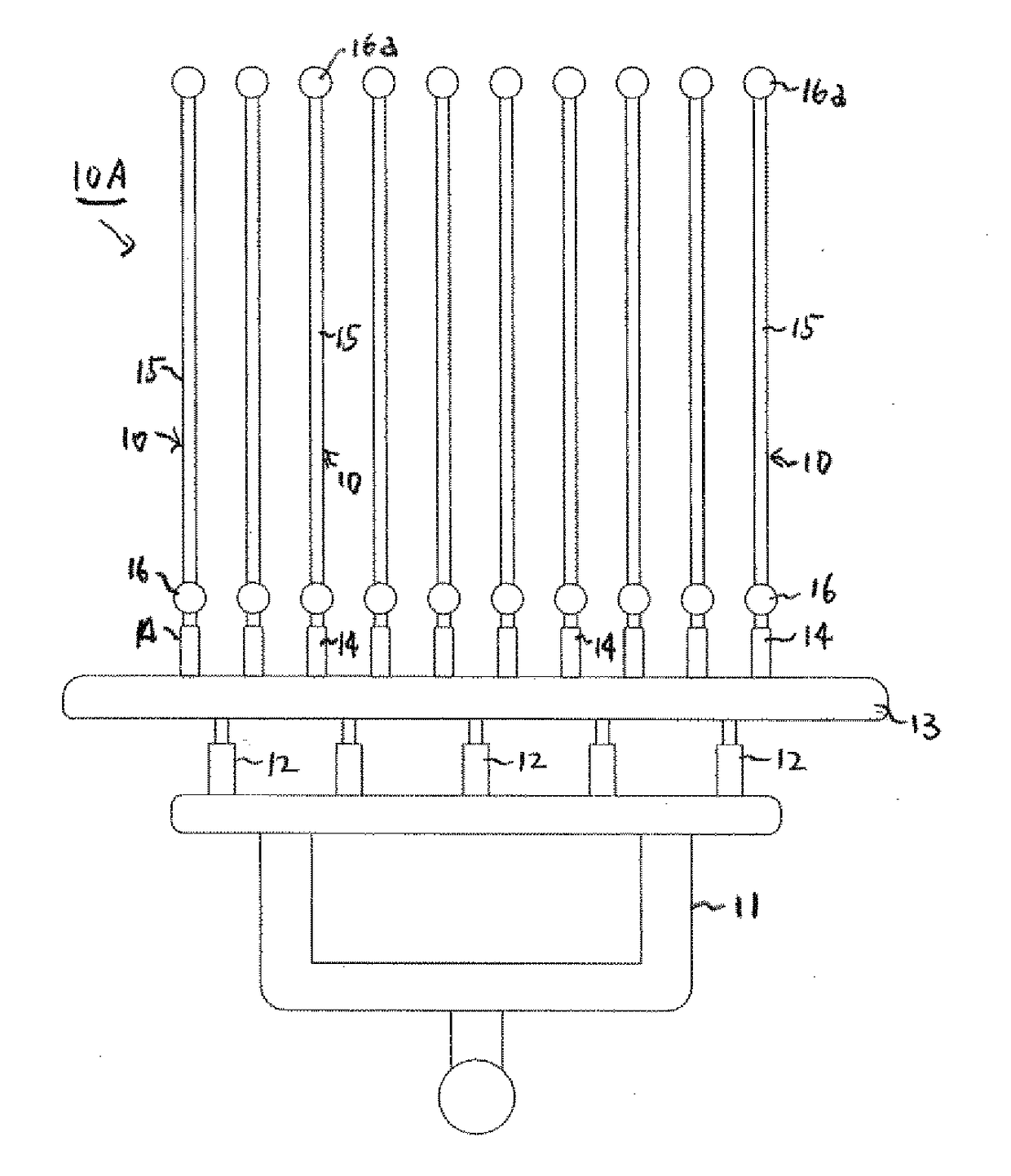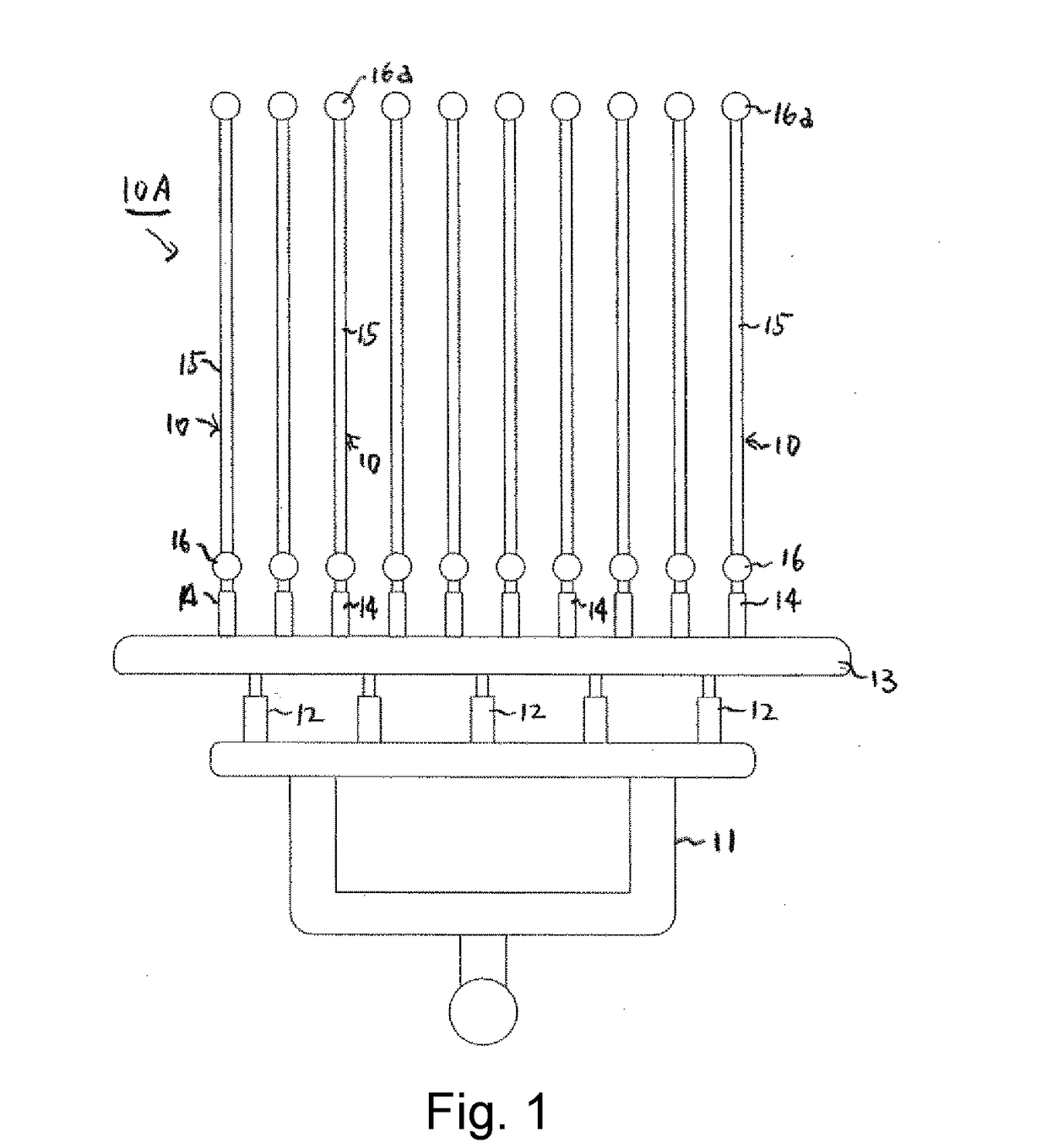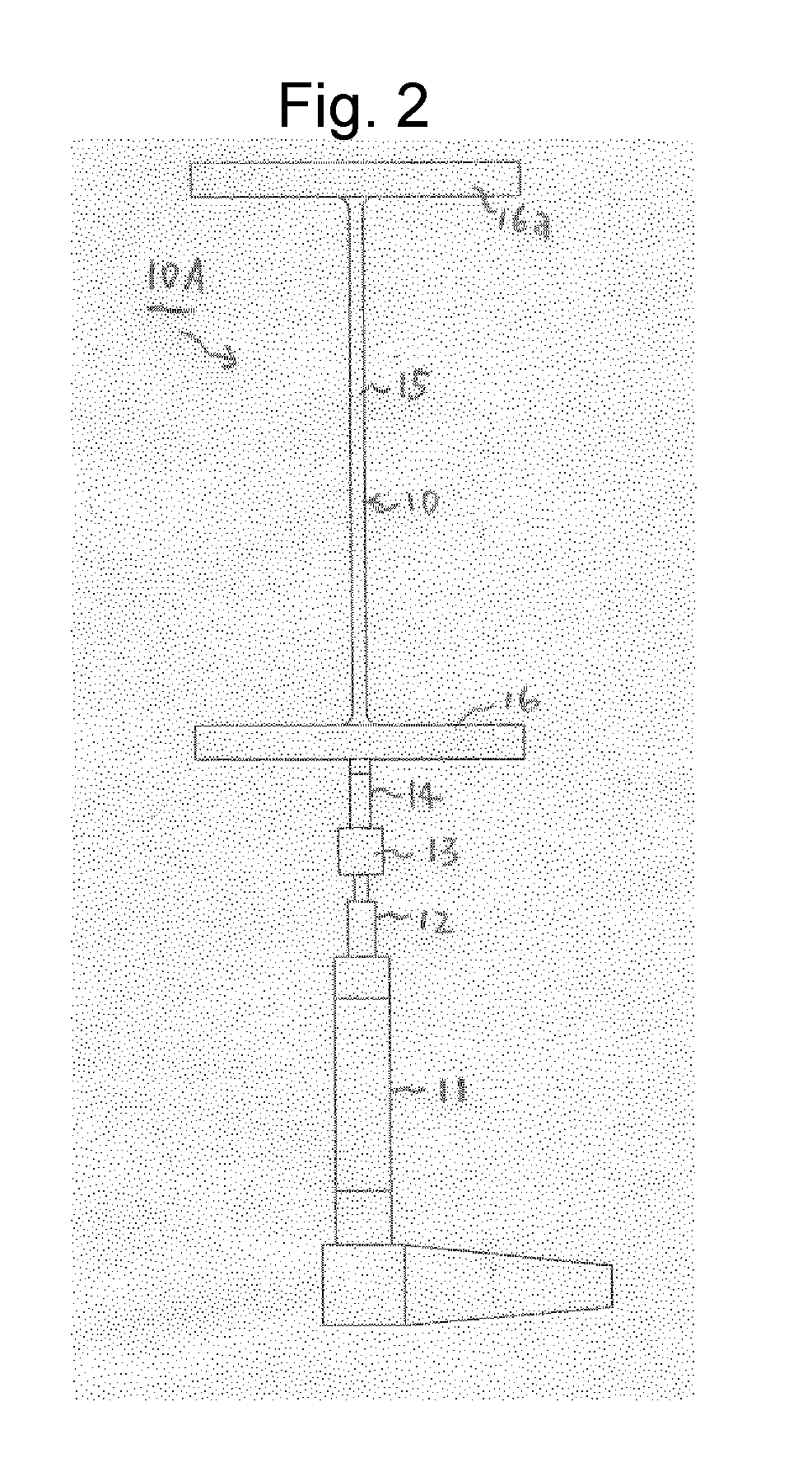Injection molding method using peek material and molded item
- Summary
- Abstract
- Description
- Claims
- Application Information
AI Technical Summary
Benefits of technology
Problems solved by technology
Method used
Image
Examples
embodiment 1
[0050]Next, a preferable embodiment of the invention will be described with reference to the drawings. The invention is based on the condition described in claim 1 and a molded item is obtained based on the injection molding method described in claim 1. That is, when a molded item is injection-molded using a PEEK material in the invention, the filling peak pressure of the mold is 40 MPa to 150 MPa, which is much lower than the pressure (180 MPa to 280 MPa) used conventionally. Molding under such a low pressure provides the molded item with characteristics such as flexibility, viscosity, and elasticity.
[0051]Of stretching treatments performed as necessary, the in-mold stretching method is performed based on the principle illustrated in FIGS. 7 to 9. In FIGS. 7 to 9, reference numeral 1 represent mold product inserts and the mold product inserts 1 are attached to a mount plate. The mold product inserts 1 are provided with a sprue 2 for PEEK, which is a raw material, and the sprue 2 pe...
PUM
| Property | Measurement | Unit |
|---|---|---|
| Length | aaaaa | aaaaa |
| Length | aaaaa | aaaaa |
| Pressure | aaaaa | aaaaa |
Abstract
Description
Claims
Application Information
 Login to View More
Login to View More - R&D
- Intellectual Property
- Life Sciences
- Materials
- Tech Scout
- Unparalleled Data Quality
- Higher Quality Content
- 60% Fewer Hallucinations
Browse by: Latest US Patents, China's latest patents, Technical Efficacy Thesaurus, Application Domain, Technology Topic, Popular Technical Reports.
© 2025 PatSnap. All rights reserved.Legal|Privacy policy|Modern Slavery Act Transparency Statement|Sitemap|About US| Contact US: help@patsnap.com



